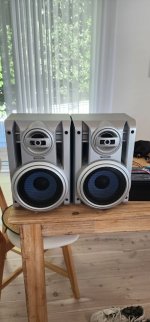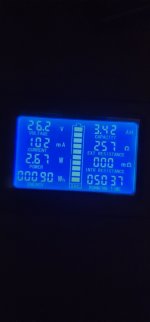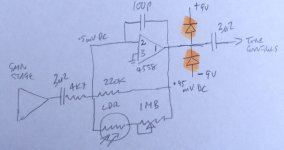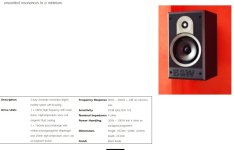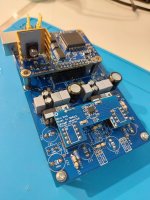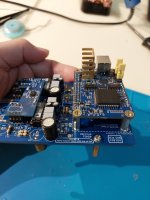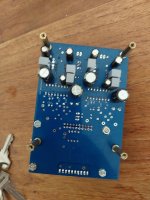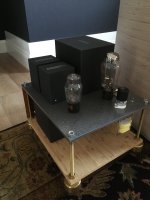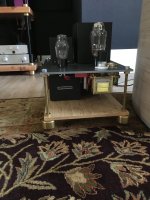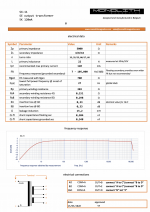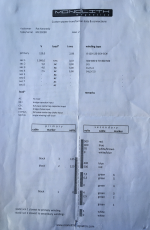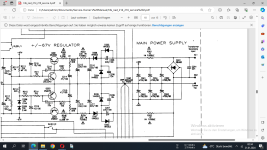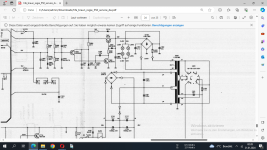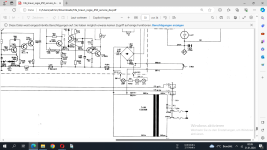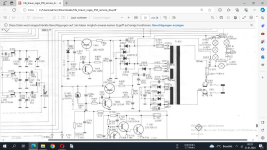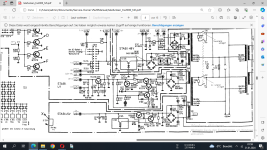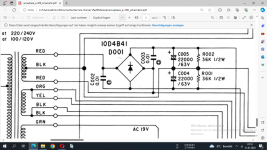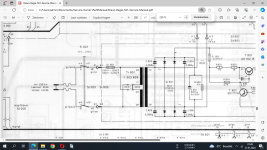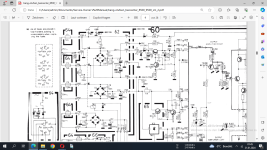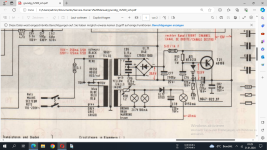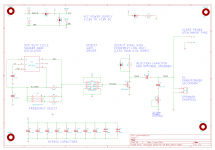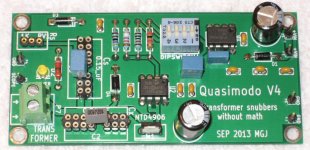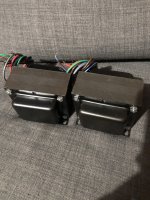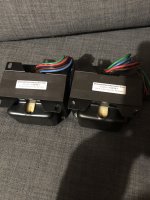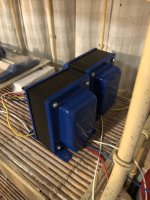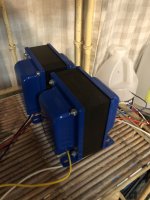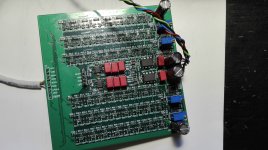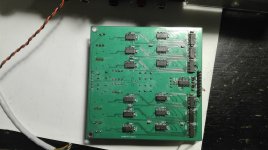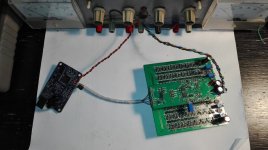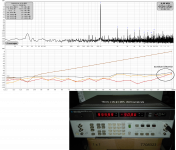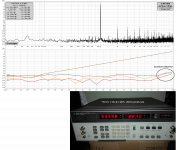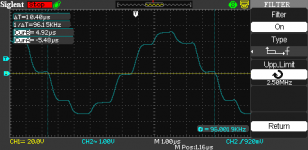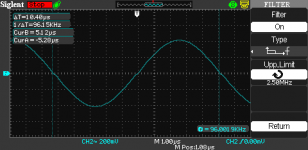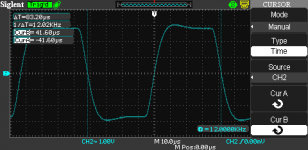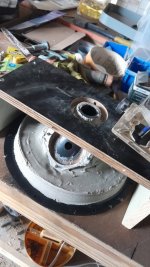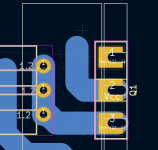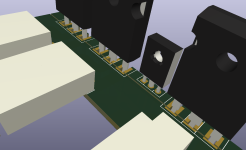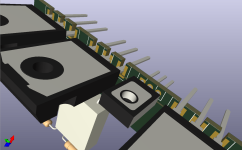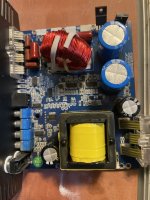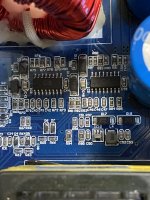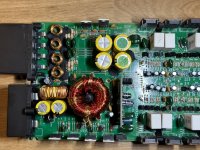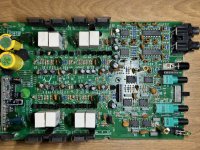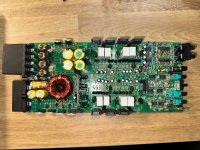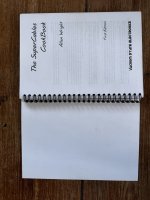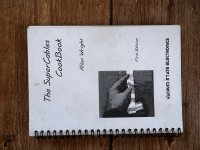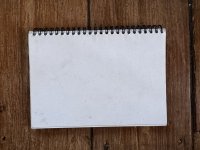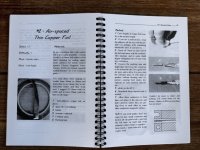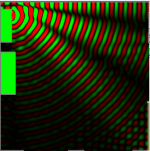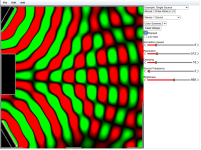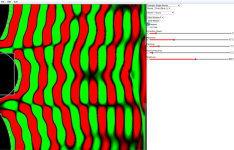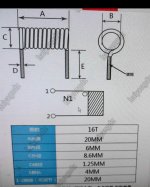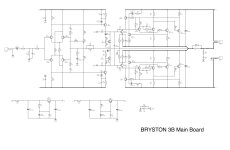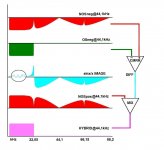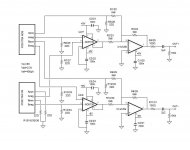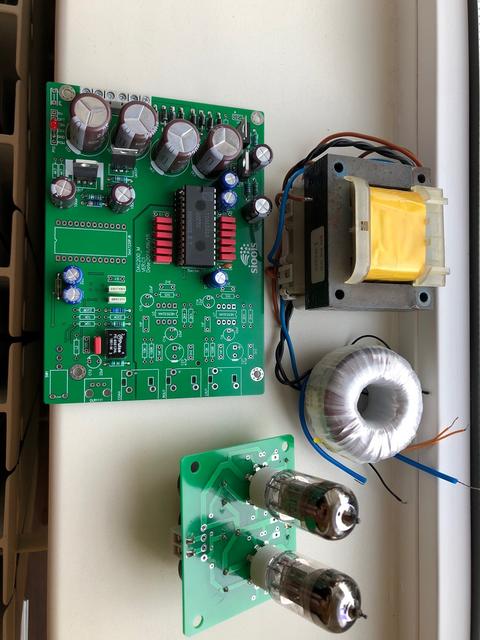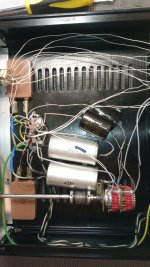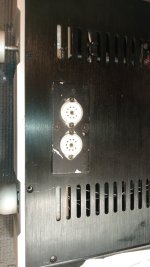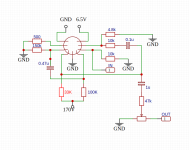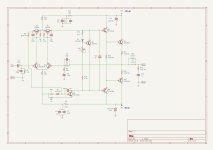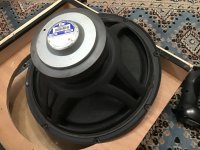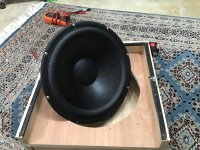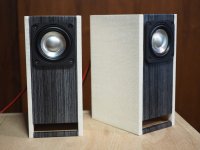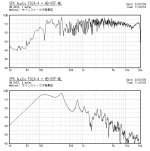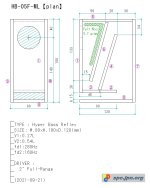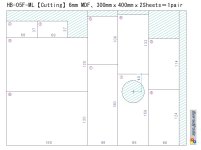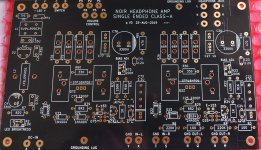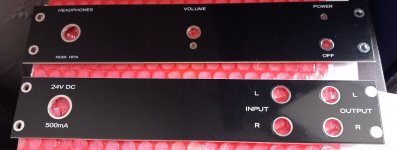hallo everyone
there are many technologies by manufacture to reach perfect data so as high linearity and transit frequency. The newest is "BiT-LA" (ST) and older versions are "M.E.T" (TOS), "LAPT" (Sanken), RET (FUJ) and EBT (NEC). I think, there are many more versions without especially abbrevation. Until this day I don't find a describtion about the advantages and the disadvantages between all this technologies. Perhaps one of you knows books or websites especially about this topic.
For me it is amazing, that the currently types of old motorola MJ series (e.g. MJ21193/MJ21194 without DC-SOA in data sheet) provides perfect sonic transmission by only 4 MHz ft. What is in real life the advantage for 10 times higher values of ft for audio power applications (possibly depending on whether the emitter follower or common emitter is used)?
In additional very helpful for me are to know the exactly titles of orig.data books and application notes from NEC and Fujitsu. Then I can order copies of this books by my tele rent library. Because the titles of all my own data books are very unspecifically (eg "power Devices" "discrete Power" "Bipolare Power" or "High Current Transistor"), I need the exact title of data book for order copies. Perhaps one of you knows orig. data books from NEC and Fujitsu between 1977 and 1987 about transistors for audio.
Thank you very much for your replies - I hope, you can understand my not perfect english
At follow a little overview from me about currently available so as no longer available BjT's for audio power amplifiers:
1) ST-Microelectronics "BiT-LA"
(bipolare junction transistor linear application - planar technology with an advanced base island layout)
http://www.st.com/stonline/products/families/transistors/power_bipolars/related_info/2stcxxx.htm (ST)
2ST5949/2ST2121 250V 17A 250W hfe: 35-160 25MHz TO-3/TO-204
2STC5200/2STA1943 230V 15A 150W hfe: 35-160 30MHz TO-264
2STC5949/2STA2121 250V 17A 220W hfe: 35-160 25MHz TO-264
2STC5948/2STA2120 250V 17A 200W hfe: 35-160 25MHz TO-3P
2STC4467/2STA1694 120V 8A 80W hfe: 70-140 20MHz TO-3P
2STC4468/2STA1695 140V 10A 100W hfe: 50-140 20MHz TO-3P
2STC2510/2STA2510 100V 25A 125W hfe: 40- 80 20MHz TO-3P
2STC5242/2STA1962 230V 15A 130W hfe: 35-160 30MHz TO-3P
2STW4466/2STW1693 80V 6A 60W hfe: 50-120 20MHz TO-247
2STW4468/2STW1695 140V 10A 100W hfe: 50-120 20MHz TO-247
2) TOKYO SHIBAURA ELECTRIC CO (Toshiba) "M.E.T"
Multi Emitter Transistor
http://www.semicon.toshiba.co.jp/eng/product/transistor/index.html
TO-3P(L) = TO-3P Large =TO264 TO-3P(N) = TO-3P (N=Normal)
2SA1939/2SC5196 80V 6A 60W hfe: 55-160 30MHzTO-3P(N)--
2SA1940/2SC5197 120V 8A 80W hfe: 55-160 30MHzTO-3P(N)--
2SA1941/2SC5198 140V 10A 100W hfe: 55-160 30MHz TO-3P(N)--
2SA1942/2SC5199 160V 12A 120W hfe: 55-160 30MHz TO-3P(L)--
2SA1943/2SC5200 230V 15A 150W hfe: 55-160 30MHz TO-3P(L)..
2SA1962/ 2SC5242 230V 15A 130W hfe: 55-160 30MHz TO-3P(N)..
2SA1986/2SC5358 230V 15A 150W hfe: 55-160 30MHz TO-3P(N)--
2SA1987/2SC5359 230V 15A 180W hfe: 55-160 30MHz TO-3P(L)--
2SA2120/2SC5948 200V 12A 200W hfe: 55-160 25MHz TO-3P(N)--
2SA2121/2SC5949 200V 15A 220W hfe: 55-160 25MHzTO-3P(L)--
2SA1302/2SC3281 old type, see MJW1302A/MJW3281A from onsemi
2SA1095/2SC2565 160V 15A 150W hfe: 40min 60MHz RM60 (34,3x16,3x5,3mm), old type, gr/bl
http://www.datasheetcatalog.net/de/datasheets_pdf/2/S/A/1/2SA1095.shtml
http://www.patentstorm.us/patents/4297597/description.html
http://www.patentstorm.us/patents/4339765/description.html
http://www.pat2pdf.org/ (4297597) and (4339765)
3) Fairchild - Toshiba
(also "M.E.T" = Multi Emitter Transistor ?)
www.fairchildsemi.com/ds/2S/2SC5200.pdf
http://www.fairchildsemi.com/pf/FJ/FJL4315.html
http://www.fairchildsemi.com/sitesearch/fsc.jsp?command=eq&attr1=AAAFamily&attr2=Power+BJT
FJL4215/FJL4315: see Toshiba 2SA1943/2SC5200
FJA4213//FJA4313 see Toshiba 2SA1962/ 2SC5242
4) a. ON (Single Emitter ? - I don't know)
http://www.onsemi.com/PowerSolutions/parametrics.do?id=796
MJ21195/MJ21196 250V 16A 250W hfe: 25-75 5MHz TO-3/TO-204
MJ21193/MJ21194 250V 16A 250W hfe: 25-75 5MHz TO-3/TO-204
MJL21195G/MJL21196G 250V 16A 200W hfe: 25-75 4MHz TO-3PBL (TO-264)
MJL21193G/MJL21194G 250V 16A 200W hfe: 25-75 4MHz TO-3PBL (TO-264)
MJW21195G/MJW21196G 250V 16A 200W hfe: 20-80 4MHz TO-247
MJW21193G/MJW21194G 250V 16A 200W hfe: 20-70 4MHz TO-247
NJW21193G/NJW21194G 250V 16A 200W hfe: 20-70 4MHz TO-3P
MJW21191G/MJW21192G 150V 8A 100W hfe: 15-100 4MHz TO-247
4) b. ON -Toshiba "M.E.T" = Multi Emitter Transistor
MJL1302A/MJL3281A 250V 16A 200W hfe: 75-150 30MHz TO-3PBL (TO-264)
MJL4302A/MJL4281A 350V 15A 230W hfe: 80-250 35MHz TO-3PBL (TO-264)
MJW1302A/MJW3281A 230V 15A 200W hfe: 50-200 30MHz TO-247
NJW1302A/NJW3281A 250V 15A 200W hfe: 75-150 30MHz TO-3P
NJW0302G/0281G 250V 15A 150W hfe: 75-150 30MHz TO-3P
5) Sanken "LAPT" (Large Area Parallel Transistor)
http://www.sanken-ele.co.jp/en/prod/semicon/ptr/ptr_u/ptr_01e.htm
2SA1380/2SC4886 150V 14A 80W hfe: 50min 50MHz TO-3PF (FM100)
2SA1186/2SC2837 150V 10A 100W hfe: 50min 60MHz TO-3P (MT100)
2SA1303/2SC3284 150V 14A 125W hfe: 50min 50MHz TO-3P (MT100)
2SA1386/2SC3519 160V 15A 130W hfe: 50min 40MHz TO-3P (MT100)
2SA1294/2SC3263 230V 15A 130W hfe: 50min 35MHz TO-3P (MT100)
2SA1215/2SC2921 160V 15A 150W hfe: 50min 50MHz MT200
2SA1216/2SC2922 180V 17A 200W hfe: 30min 40MHz MT200
2SA1295/2SC3264 230V 17A 200W hfe: 50min 35MHz MT200
2SA1494/2SC3858 200V 17A 200W hfe: 50min 20MHz MT200
6) Fujitsu "R.E.T." (Ringemitter Transistor) all types old
http://www.datasheetcatalog.net/de/datasheets_pdf/2/S/A/1/2SA1078.shtml (driver stage ft 140 MHz TO220)
2SA1003/2SC2323, TO-3 (no original Datasheet)
http://www.datasheetarchive.com/2SA1044-datasheet.html
2SA1043/2SC2433 120V 10A 150W hfe: 35-200 60MHz TO-3, old type
2SA1044/2SC2434 70V 10A 150W hfe: 35-200 60MHz TO-3, old type
www.classiccmp.org/rtellason/transdata/2sa1075.pdf
2SA1075/2SC2525 gr/bl 120V 12A 120W hfe: 60-200 60MHz RM60 (34,3x16,3x5,3mm), old type
2SA1076/2SC2526 gr/bl 120V 12A 120W hfe: 60-200 60MHz RM60 (34,3x16,3x5,3mm), old type
http://www.patentstorm.us/patents/5786622/description.html
http://www.pat2pdf.org/ 5786622
7) NEC E.B.T Transistor (Emitter Ballast Transistor) all types old
2SA1141/2SC2681 blue/bl 115V 10A 100W hfe: 60-200 80MHz similar TO247 (no orig. NEC datasheet)
http://www.alldatasheet.com/datasheet-pdf/pdf/107746/ETC/2SA1141.html (datasheet ETC clone)
http://www2s.biglobe.ne.jp/~ii_on/recycle2/tr1/img/DSC02881.JPG (Foto)
2SA1227/2SC2987 gr/bl 140V 12A 120W hfe: 60-320 50MHz similar TO247
2SA1227A/2SC2987A gr/bl 140V 12A 120W hfe: 60-320 50MHz similar TO247
http://www.datasheetcatalog.net/de/datasheets_pdf/2/S/A/1/2SA1227.shtml (only short form data)
http://www.niji.or.jp/home/k-nisi/a-10.html (used in integrated amp NEC A10)
http://homepage2.nifty.com/~mhitaste/audiotop/dcamp_parts/dc_ampparts010.html (supplier)
http://www.patentstorm.us/patents/6403436.html
http://www.pat2pdf.org/ 6403436
8) Matsushita/Panasonic MESA (RET, MET or EBT?) all types old
(outfit like Mesa table hill skyline Arizona)
2SA1064/2SC2488 150V 8A 100W hfe: 40-280 50MHz TO-3
2SA1065/2SC2489 150V 10A 120W hfe: 40-200 50MHz TO-3
http://www.datasheetcatalog.com/datasheets_pdf/2/S/A/1/2SA1065.shtml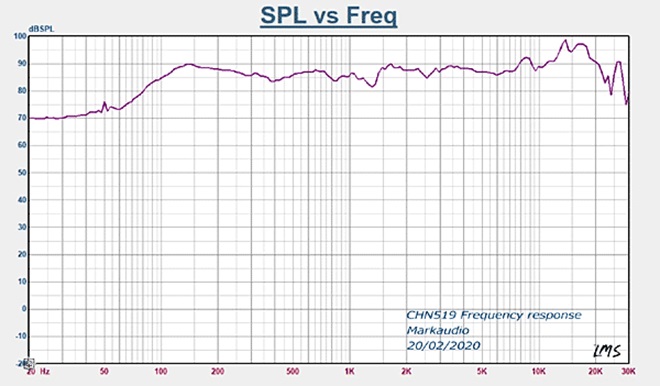

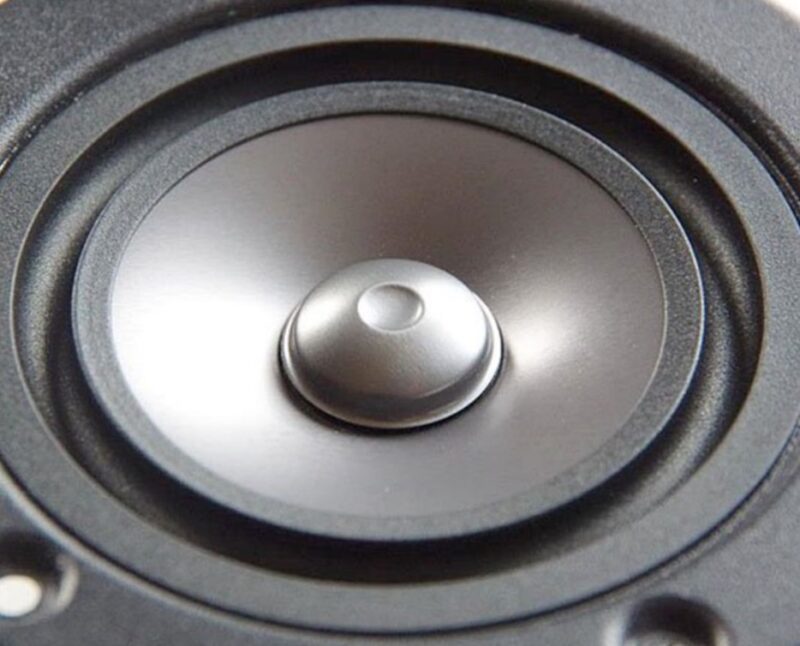




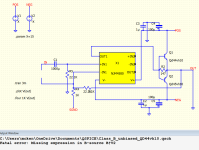

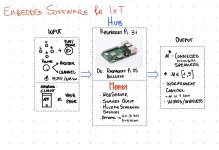
 Discussion split from here -
Discussion split from here - 